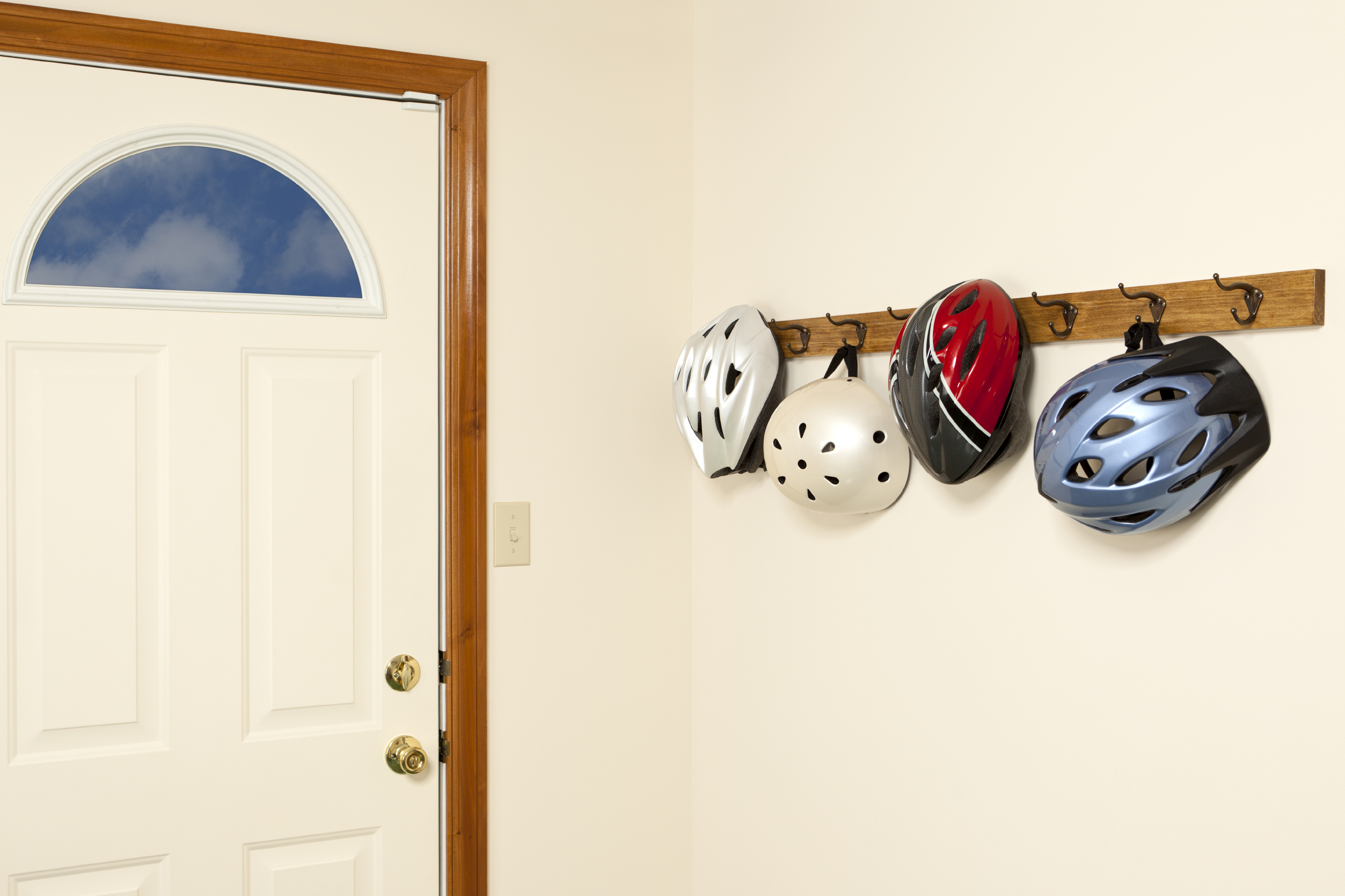6 bike helmets of the future
From The Idea Factory, our special report on innovation


Bikes are booming. The number of people commuting to work on a bicycle has increased by a whopping 60 percent in the last 10 years, according to the U.S. Census Bureau. Not surprisingly, injuries and deaths involving cyclists are also on the rise, and cycling is the leading sport for head injuries, according to American Association of Neurological Surgeons.
We could sure use some innovative ideas to improve helmet technology. Luckily, there are a number of projects in the works:
1. The helmet that's like Google Glass
The Week
Escape your echo chamber. Get the facts behind the news, plus analysis from multiple perspectives.

Sign up for The Week's Free Newsletters
From our morning news briefing to a weekly Good News Newsletter, get the best of The Week delivered directly to your inbox.
From our morning news briefing to a weekly Good News Newsletter, get the best of The Week delivered directly to your inbox.
When pedestrians get a bit lost, they can pull out a smartphone and open Google Maps. This is nearly impossible (and very dangerous!) as a cyclist. That's why a London-based ideas lab called the Future Cities Catapult has prototyped a helmet that comes with a Google Glass-like visor to help cyclists navigate the city with better ease and safety. The helmet could use data from bike and street maps to highlight direct routes, warn about danger zones, and detect blind spots around large vehicles. "If these displays talked to the city around them — if they knew where the cyclist was and what they were looking at — they could give much more subtle spatial and contextual information that builds on the surroundings of the cyclist," the creators write.
2. The invisible airbag helmet
For anyone who hates helmet head but also the idea of bicycling around unprotected, the Hövding helmet is a compelling innovation. Hovding is essentially an airbag for your head. It comes in the form of a collar you wear around your neck that's stuffed with an airbag and sensors that register your movement 200 times a second. If the sensors recognize abnormal movement, the airbag deflates in one-tenth of a second to absorb the impact shock and protect your head, face, and throat. Aside from being a stylish option, the Hövding has some impressive safety specs. According to one test, the Hovding is three times more protective than the best mainstream helmets on the market. It costs around 299 euros, or $340. Unfortunately, once it inflates, it can't be used again.
3. The helmet that tells cars where you are
A free daily email with the biggest news stories of the day – and the best features from TheWeek.com
Volvo is taking steps to make it nearly impossible for drivers and cyclists to sneak up on one another. The Volvo Car's Safety system, standard in all new XC90s, detects cyclists and warns drivers when they're nearby, even auto-braking to avoid crashes. At CES this year, the car maker unveiled the second part of its plan: a connected helmet that communicates with the smart car system and vibrates or illuminates when a vehicle is approaching or a crash is possible. The logistics are a bit complicated; the cyclist and driver would both need to use a smartphone app to track their position and send it up to the Volvo cloud. Right now it's just a concept and still just for Volvo, but it's a good demonstration of how cars and bikes can co-exist in the future.
4. The helmet that measures your heart rate
Many athletes use chest straps loaded with sensors to measure their heart rate and overall performance. A startup called LifeBEAM wants to get rid of the strap by integrating these same sensors into a bike helmet. The company was originally designing a sensing platform to be used on astronauts and pilots, but pivoted to focus on cyclists. The LifeBEAM helmet, which sells for $229, has a built-in heart rate sensor, calorie counter, and performance analysis, all of which can be beamed to smartphones and smartwatches for analysis later. Oh, and it protects your head.
5. The helmet that tests for concussions
Students at Oregon State University teamed up with Intel last summer to create a sensor-packed smart helmet that knows when a crash has occurred and, depending on the severity of the injuries, can call an emergency contact and send a text message including the location of the crash. The helmet also connects with an app that asks the rider a series of basic questions similar to those a doctor might ask during a concussion test, like "what month is it?" Acting as a sort of "black box" for bicyclists, the helmet also collects and stores information about the location and severity of crashes.
6. The helmet that reads your mind
You want your bike ride to be safe, but also enjoyable. A helmet called the MindRider "tracks, in real time, how your rides, movement, and location engage your mind." Its creators basically took a standard EEG brainwave sensor and combined it with a regular bike helmet. The info collected on your ride gets sent back to an app that maps the trip, showing "Sweetspots" when you felt relaxed and "Hotspots" of intense focus. Using the data, you can avoid the most stressful routes next time you're out for a ride. MindRider didn't have a particularly successful Kickstarter campaign, but its creators are now using the helmet to track patterns for cyclists in NYC.
Jessica Hullinger is a writer and former deputy editor of The Week Digital. Originally from the American Midwest, she completed a degree in journalism at Indiana University Bloomington before relocating to New York City, where she pursued a career in media. After joining The Week as an intern in 2010, she served as the title’s audience development manager, senior editor and deputy editor, as well as a regular guest on “The Week Unwrapped” podcast. Her writing has featured in other publications including Popular Science, Fast Company, Fortune, and Self magazine, and she loves covering science and climate-related issues.
-
 The great global copper swindle
The great global copper swindleUnder the Radar Rising prices and easy access makes the metal a ‘more attractive target for criminals looking for a quick profit’
-
 ‘They’re nervous about playing the game’
‘They’re nervous about playing the game’Instant Opinion Opinion, comment and editorials of the day
-
 Will Netanyahu get a pardon?
Will Netanyahu get a pardon?Today's Big Question Opponents say yes, if he steps down
